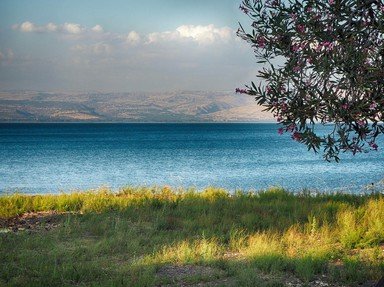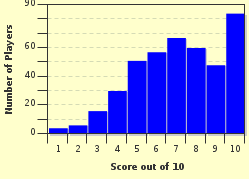Quiz Answer Key and Fun Facts
1. Jacob was taking the better part of Laban's flocks, which did not make Laban a very happy little man. After being spoken to by God, Jacob decided to pack up his wives and children to return to Canaan, and leave without telling Laban. This infuriated Laban, and he chased after Jacob for seven days. When he eventually caught up with them, he insisted on searching the tent for things that had gone missing from his house.
Anyhow, after this, Laban asked Jacob to make a covenant with him, regarding the safety and well being of Laban's daughters, grandchildren, and flocks. In what mountain range did this covenant occur?
2. The Ararat mountain range is mentioned in the Book of Genesis. Mount Ararat still exists today, and is the tallest peak in Turkey. Generally, Mount Ararat is considered to be one of the mountains in the Ararat mountain range.
Anyway, geography aside, which of the following important events occurred at the Ararat mountain range?
3. The Ten Commandments play a big part in both Jewish and Christian theology, and are a list of morals and beliefs that all those who believe in it should follow.
The Ten Commandments were given to Moses atop a mountain. Now, interestingly, Exodus and Deuteronomy give different names to the mountain atop which the Ten Commandments were received, although most historians believe that there were two different names given to the same mountain.
What are the names of the mountain atop which the Ten Commandments are believed to have been given to Moses?
4. Mount Moriah plays quite an important role in a few stories of the Old Testament.
Which of the following events occurred at Mount Moriah?
5. The following mountain is frequently mentioned and alluded to in the Bible: it's mentioned in the Old Testament as being one of the paths that David took in order to escape Absalom's rebellion, and it's mentioned again in the New Testament as being the mountain where Jesus wept over Jerusalem.
What is the name of this mountain?
6. Situated in the land of Edom, Mount Hor was the place of death for one of the following Biblical characters.
Which one of these men died upon the summit of Mount Hor?
7. There was a great drought. Ahab accused Elijah of being "the troubler of Israel," thinking that he had brought this suffering upon Israel. Elijah, however, hit back, saying that it was Ahab's fault, and that he was in fact "the troubler of Israel" because he was allowing the worship of false gods. Elijah then asked Ahab to assemble everyone in Israel at a certain mountain in order to prove which god - Yahweh, or Baal (the aforementioned "false god") - was real.
What was the name of the mountain at which Elijah challenged the prophets of Baal?
8. Saul, the first King of Israel, killed himself atop a mountain called Mount Gilboa, after he saw that his armies were being defeated by the Philistines.
How did King Saul kill himself?
9. This next mountain that we look at was quite significant for Moses. From this mountain's peak, he was finally able to see the Promised Land that he had been travelling towards for over forty years. It was also the mountain where he died.
What was the name of this mountain?
10. In Matthew, there was a rather famous open-air speech given by Jesus, starting with the Beatitudes, and comprising of the Lord's Prayer, and other things that Christians believe was Jesus' commentary on the Ten Commandments.
This speech was given atop a mountain. Thus, it has come to be known as:
Source: Author
thegogga
This quiz was reviewed by FunTrivia editor
CellarDoor before going online.
Any errors found in FunTrivia content are routinely corrected through our feedback system.

